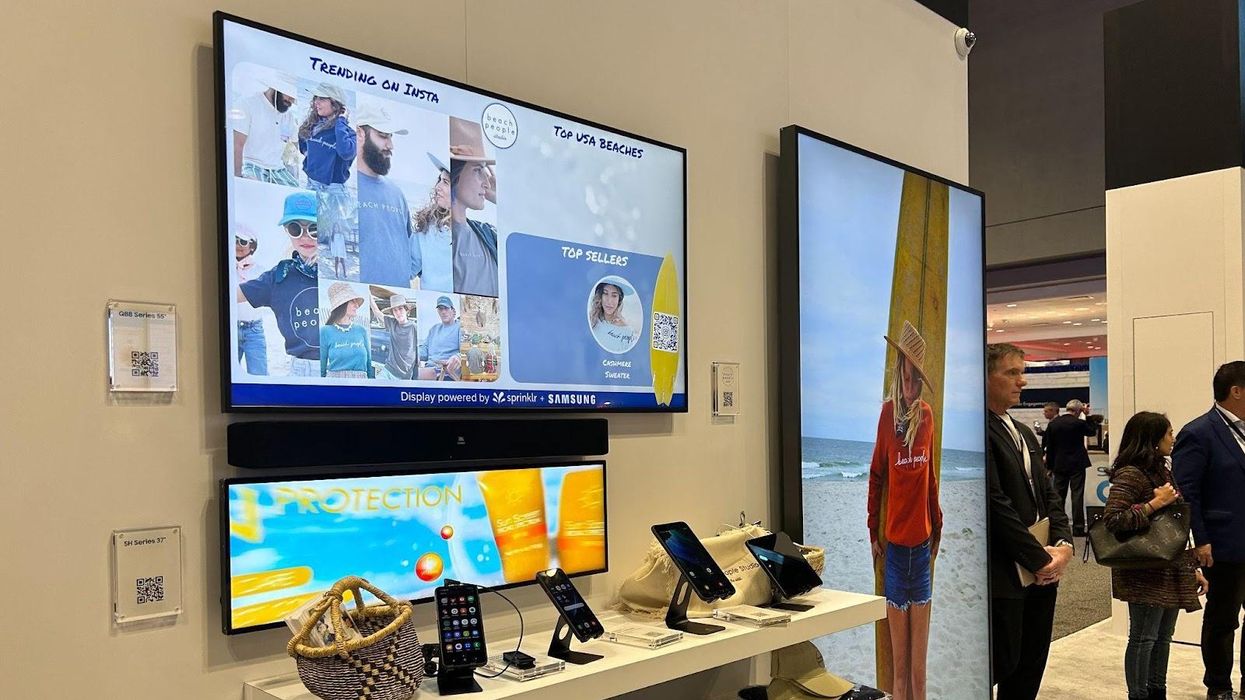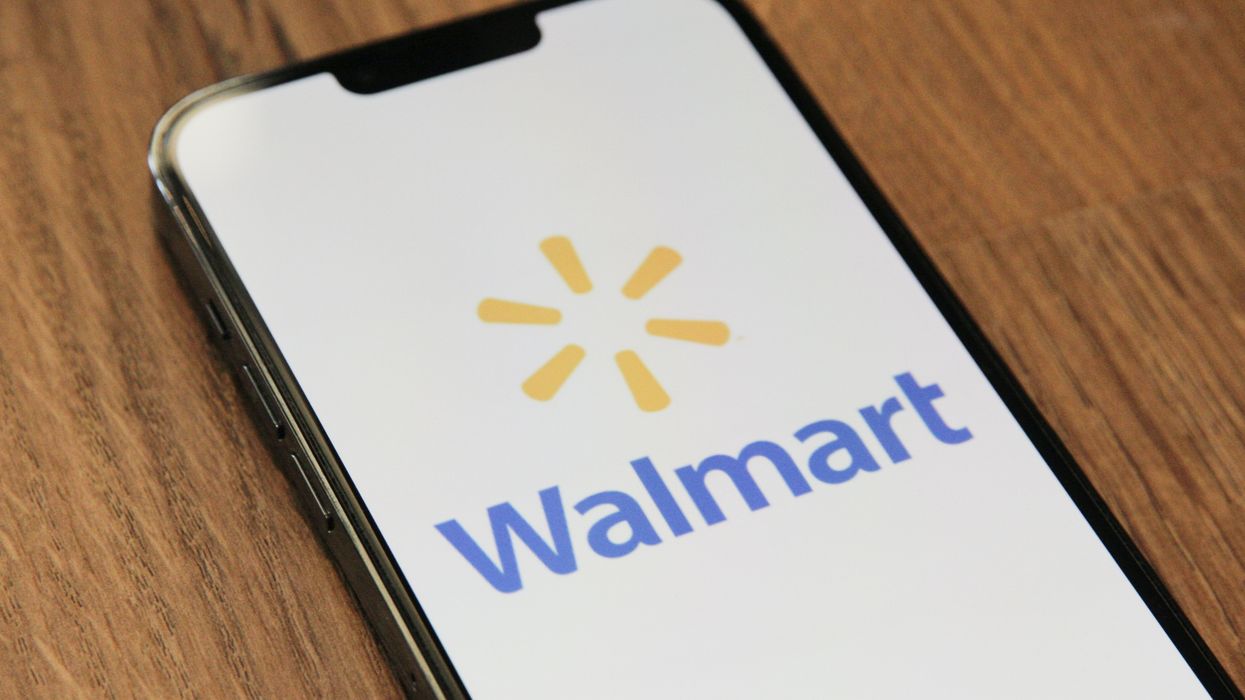We're taught that enterprise and consumer are different. They require different approaches to market, and the features required can vary depending on the specific needs. Yet there are a number of elements that are constant across these segments. Operating in both, and there are advantages learned from expertise in one area that can be applied to another.
This came to light inside Samsung booth at the 2023 NRF Big Show.
Think of Samsung, and consumer smartphones and TVs may come to mind. None of that was on display in New York, however.
The company’s booth offered a look at the technology and systems that the electronics brand provides for retailers.
Joe Hasenzahl, director of sales for B2B mobility for retail at Samsung Electronics America, demonstrated several of the features of Samsung’s enterprise devices for retail associates.
In-store mobility devices look like a smartphone, but they are a “ruggedized” and have distinct features. There are swappable batteries. They can survive a fall on concrete, and can be submerged in water for 30 minutes. Plus, there is a big screen, built-in software to take contactless payment and additional device security. While a consumer phone may have a few communication functions, this one is designed to be a whiteboard, walkie talkie, payment processor, point of sale and training device all in one.
“Nobody in retail has one job, and neither does your device,” Hasenzahl said. “It's got to be able to do everything because retail has set that dynamic.”

Digital displays show social media. (Courtesy photo)
But break down what the associate wants from a device, and plenty of similarities with consumer technology start to emerge. People want information that they need to function available at their fingertips, and the phone provides that with scheduling and workflow tools. They want to have peer-to-peer communication. The voice activation provides that, and they can use the phone to talk, as it was originally intended.
Hasenzahl said Samsung's approach to designing for the user comes down to three questions: Who is the brand talking to? It may be a customer and it may be an associate. Where is that person? They may be on their couch or in a store. Finally, what is the messaging opportunity?
“It's everywhere from their own personal mobile device, to a device given to an associate in a retail environment by that retailer, all the way up to billboards in Times Square,” Hasenzahl said.
In the end, associates and customers are all people. They want many of the same things.
“We understand how consumers are using mobility and recognizing that there's not a substantial difference between what associates demand and what consumers demand, leaving them with a device that's natural for them, but still designed for the enterprise,” Hasenzahl said.
Display drives an ecosystem.

A display at Samsung's NRF booth. (Courtesy photo)
It’s also worth remembering that consumers have devices when they enter a store, just like associates do.
That insight is helping to inform Samsung’s work on an in-store ecosystem that includes digital signage, sensors, kiosks, a shopper’s device and software to connect and power the whole experience.
Working with technology partners, Samsung is leveraging this connected system to analyze shopper behavior in a store.
The journey starts like this: A shopper may see a sign outside a store, and walk in. When they do, a sensor picks up the signal, and the phone flips over to an in-store mode. This switch doesn’t require a user to opt in, but data is anonymized.
Just like with a website, the system can analyze where a shopper is, how long they spent inside and other key information.
“Here's what we learned from our signage: Analytics are great by themselves, but when you connect them to our signage, it's like peanut butter and jelly put together,” said Parrish Chapman, director of enterprise retail sales at Samsung. “We now can have an action and change that action during the buyer journey…We know when you come in, where the device is traveling, how long you're in every zone. This allows us to automatically change content on the digital signage in the store."

A kiosk in Samsung's retail division. (Courtesy photo)
Additional information can be positioned throughout the store, whether it is on kiosks or relevant social media posts on digital displays through a partnership with Sprinklr. The idea is to offer a host of options that meet preferences and needs of a particular shopping trip.
“Customers are picking how they interact with the technology instead of us telling them,” Chapman said.
Samsung's capabilities can also elevate the sensory experience. The booth included an aroma associated with a cafe and sound triggers through technology from Samsung brands Harman, MagicINFO and Blueforce Development.
While the additional features may lead some to hear the sound of bills ringing up higher and higher, Chapman said this technology can be subsidized in part through advertising. The Samsung Ads network provides digital out-of-home advertising. For retailers, ads could appear on EV charging stations, or in-store displays.
While there are many different offerings, Chapman said the company aims to be “consultative” in its approach, learning both about what the retailer wants and the funding approach. It starts with a display and builds out. Ultimately Samsung wants to make it easier to access this technology and offer flexibility to adopt what fits best. It has established partnerships so that retailers don’t have to work with a multitude of vendors, or even allow Samsung direct network access.
“There is a lot of data out there, and people are overwhelmed,” Chapman said. “We're trying to simplify that equation and show the impact of physical retail with our displays and our ecosystem to help them run their business.”
Just like the consumer and the associate, the retailer also wants an easy-to-use system that makes information available, and helps them perform key functions in as few steps as possible.















